

Hide.me is the world’s fastest VPN!
Ha, just kidding. Every VPN says that. And realistically?
Some are fast, but usually it’s standard advertising. Same thing goes for the “safest” and “most secure” VPNs.
But hide.me is a kind of popular VPN. I’m sure a solid portion of VPN consumers have at least heard of it—so it’s worth checking out.
I have to admit that, before I really investigated, I didn’t know too much with hide.me. So I considered it a sort of unknown.
And after testing it thoroughly…well, what I found surprised me.
Let’s take a look at why that is. Starting us off:
Performance
People want VPNs for a lot of different reasons. Some want to watch a specific show, others want to make all their online activities secure.
But just about everyone wants a VPN that performs well. After all, encrypting traffic and routing it through servers takes up some time—and the best VPNs have the least drags on performance.
So I tested out hide.me, and to be honest, the results were…
Decent.
Here’s my home’s internet speed normally:

Here’s what happened to those speeds WITH hide.me:

Hm, not fantastic. Not the worst I’ve seen, but not exactly fast.
But I noticed that while hide.me said I was connected to the “best location,” I was connected to a server on the other side of the country.
Many VPNs I’ve used identify servers far from me as being optimal, but which have lower speeds than ones close to me.
So I decided to manually connect to a server close to me, and here was the speed test result:

Okay, nope. Not better at all (except for the ping).
So, hide.me’s speeds aren’t that fast, but they’re not abysmal. I’ve seen worse, and your regular browsing experience will go by just fine for the most part.
Now, there is a slight issue I discovered that I want to bring up:
Early on in testing hide.me, I toggled with the split tunnel option and forgot about it. Long story short, I accidentally turned off hide.me’s ability to be a VPN, by not allowing it access to the VPN.
That in itself does not mean there’s anything wrong with the app (aside from an unintuitive UI).
Here’s the problem—the app would SAY I was connected, when I really wasn’t.
See for yourself:
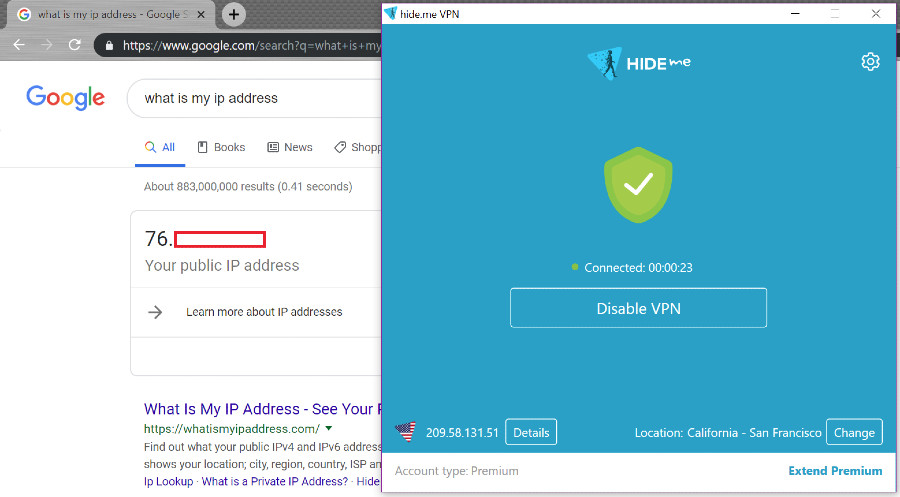
Once again, my problem isn’t that hide.me wasn’t working—that was my own mistake—but the problem is that hide.me said it was.
Meaning, unless you really checked manually, you would go along your business thinking you were secure while in reality, you were using the internet regularly.
That’s a really bad oversight—the app should simply have said it couldn’t connect or something.
So that’s been seriously bothering me.
But it’s unlikely many people will run into that design/performance bug. It is likely that many people will want to use hide.me to watch Netflix, though, so I tested that out as well.
Here’s what happened when I tried to access Hong Kong Netflix:

It worked just fine!
Unfortunately, it was a little slow. Shows still played just fine, but there was a bit more of a loading time.
Okay, Netflix (and similar services) are only part of the goal most people have for VPNs. People also want to be able to torrent safely.
Hide.me doesn’t exactly have specific servers optimized for P2P. Instead, hide.me simply tells you which servers/locations do not allow P2P.
So I connected to a viable server at random and tried to torrent an ebook:
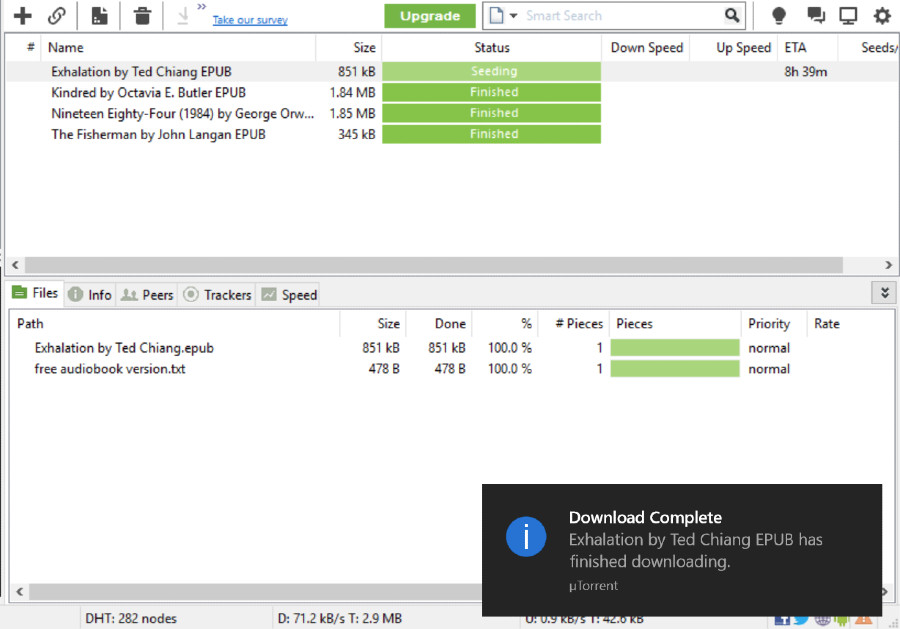
It worked just fine!
As with Netflix, it was a little slow…but nothing serious. As in, the speeds were largely what I would expect of any high performing VPN.
So in summary, how good is hide.me’s performance?
Overall, it’s good, but it’s nothing special. Hide.me’s speeds are okay, a bit on the slower side, but you can still use it just as smoothly as you would any other VPN.
At least you can stream, torrent, and browse pretty reliably—all the basics are there!
So far, hide.me isn’t off to a bad start! Let’s see if it can keep things up:
Ease of Use
Ease of use is a fun section—it’s where I get to talk not just about how easy setting up the account and software is, but how intuitive and user-friendly the software itself is.
Can hide.me redeem itself here? Let’s find out.
Making an account is pretty easy:
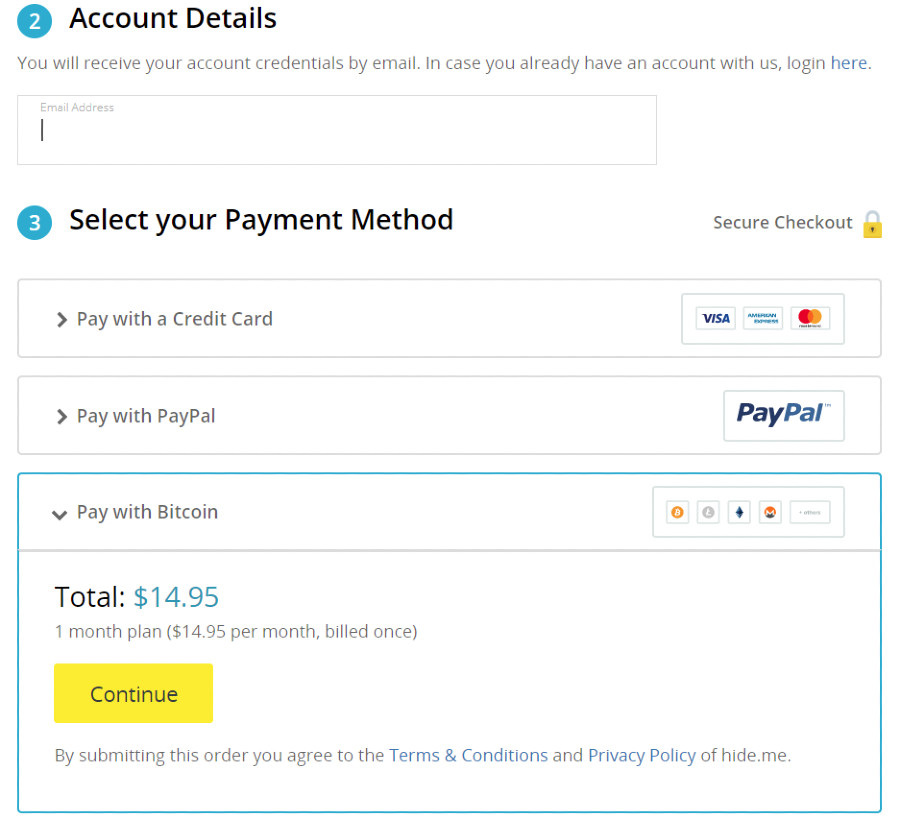
Once you’ve paid, you’ll be sent an order confirmation and an email with login info:

In my email, I had an assigned username and password, but that was basically it.
On the website’s confirmation page, (unusually) there wasn’t a clear “download here” button, or a link to go to the next step of downloading.
Not a big deal at all for me—I just went over to my account center and found the list of downloads:
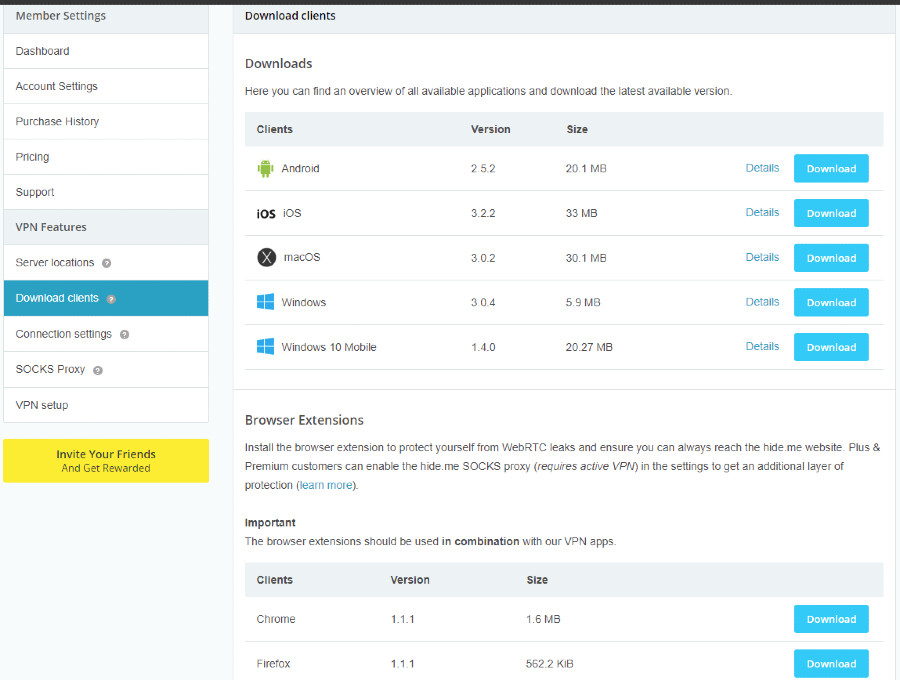
So I found the one I needed and clicked “download”:
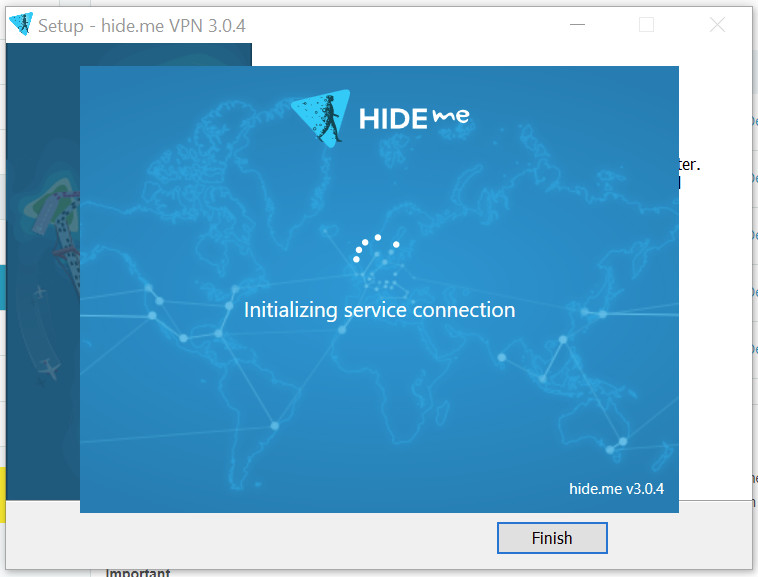
The whole thing was pretty fast.
Unfortunately, finishing the installation doesn’t actually open the app. You have to click it in your icon tray (on Windows) and then sign in:
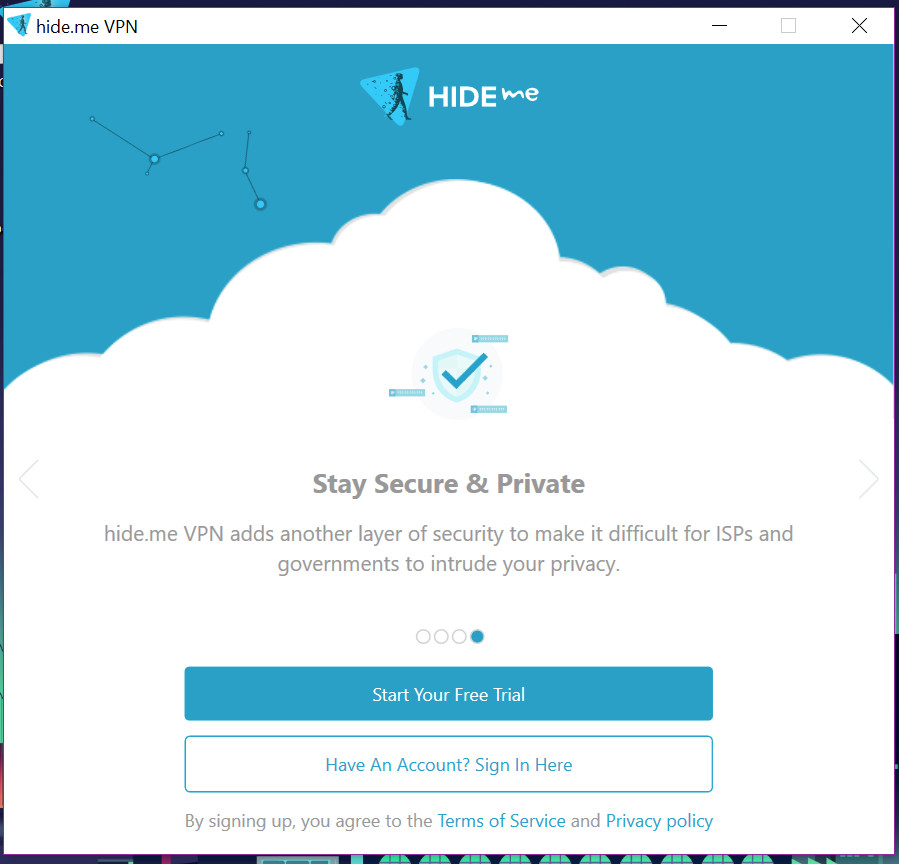
But once you do, this is what you’ll be looking at:
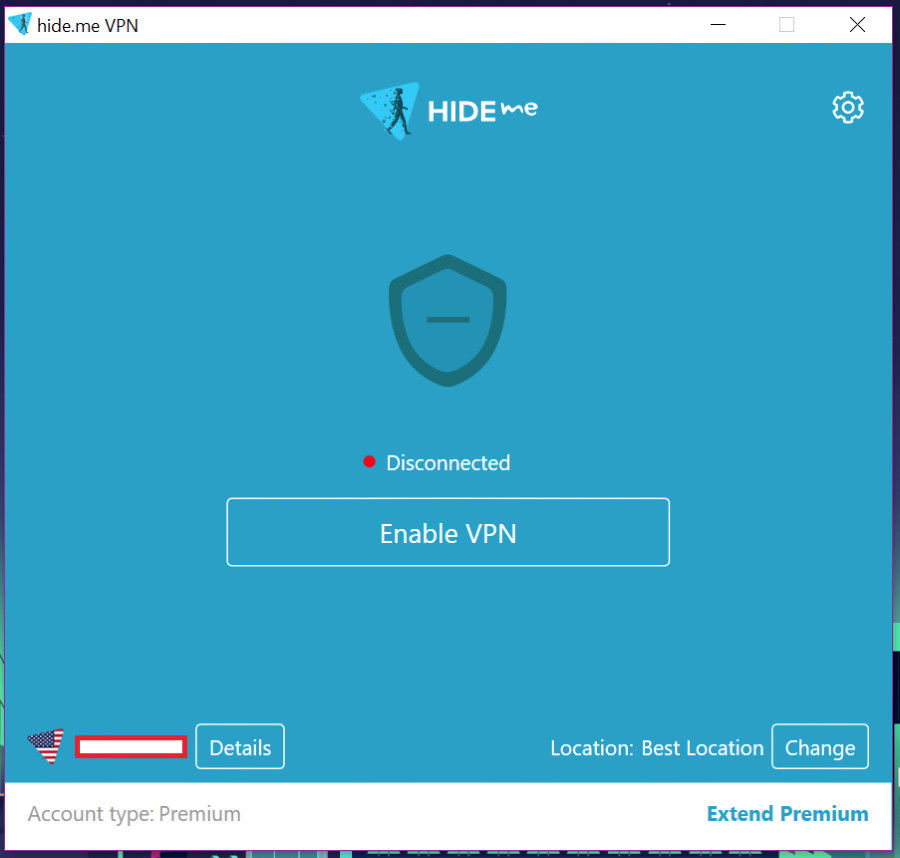
Okay, clearly, pretty simple.
The lower left corner shows your IP and country, whereas the lower right corner just describes the location of the server you’re connected to (or will be connected to).
I’ve got to be honest, I’m not a fan of this appearance. You can’t resize the window, which sucks because it’s mostly just blank.
I mean, if there were lots of graphs I’d understand…but nope.
Anyway, clicking the little “change” button in the lower right corner will open up your server list:
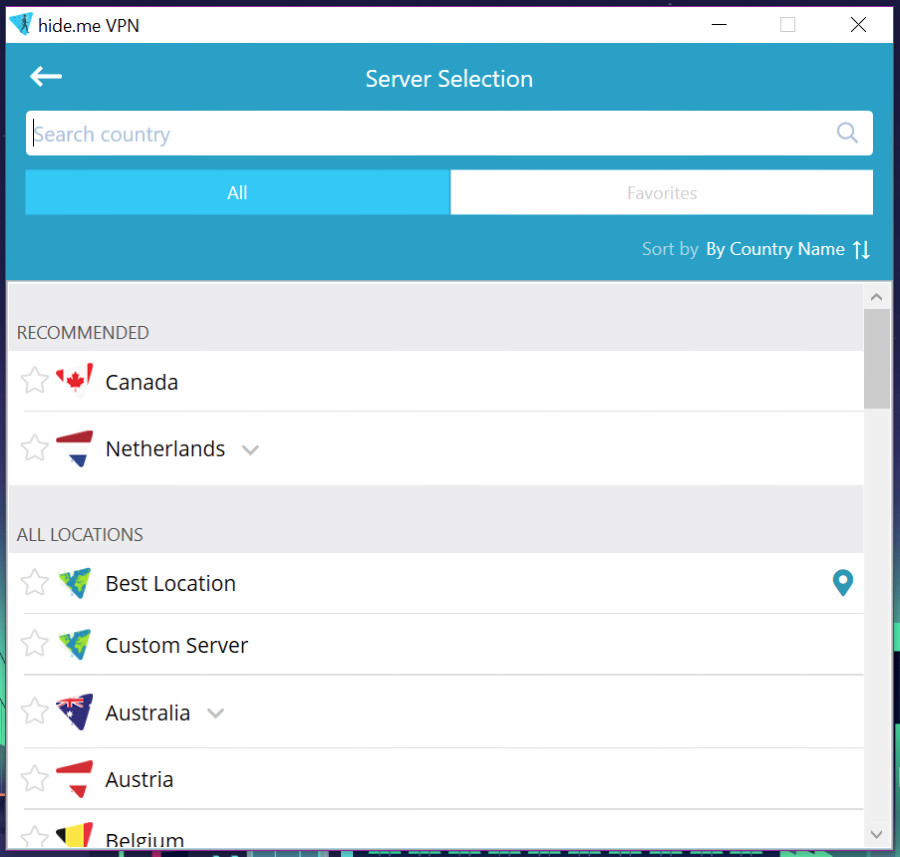
Some of the countries have dropdown menus for cities within the countries:
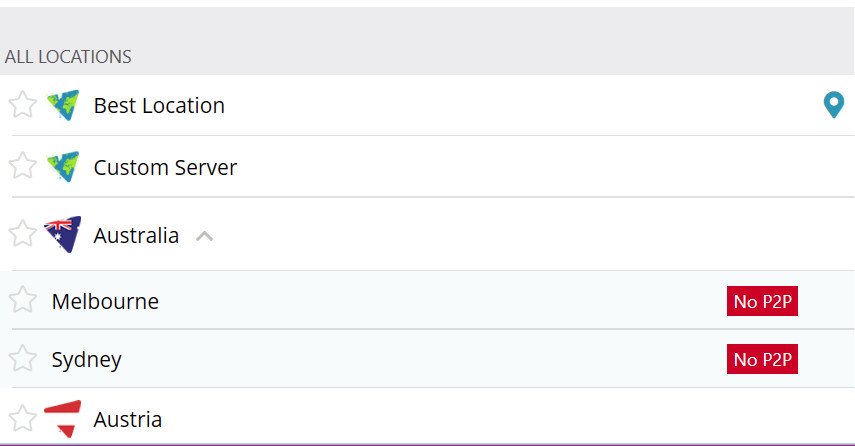
And some of them, as you can see, will have certain notations about whether the locations are P2P friendly.
You can add stuff to your favorites, search, and sort by ping or country name.
All of this is pretty basic and there isn’t much to comment about, but all the fundamentals of a searchable list are there.
The settings gear in the top right corner opens up a surprising amount of stuff:
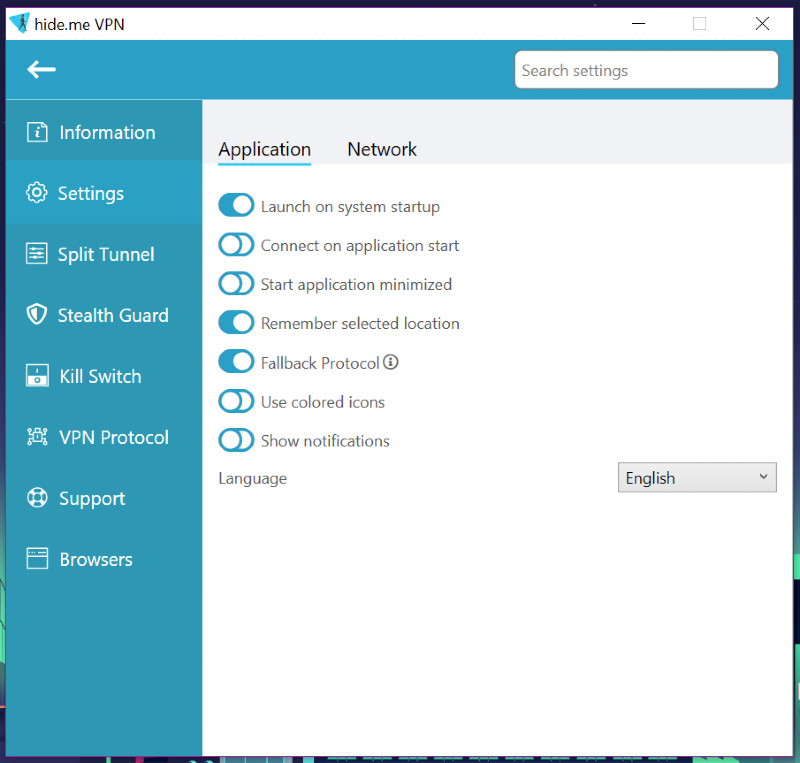
Poking around the settings, I found that hide.me is surprisingly advanced. Users have a lot of options.
But the only problem is that hide.me doesn’t really do much to make things easier for less advanced users.
A lot of other VPNs will have little descriptions in place for the various options in a settings menu.
Hide.me does have that…but only a little bit:
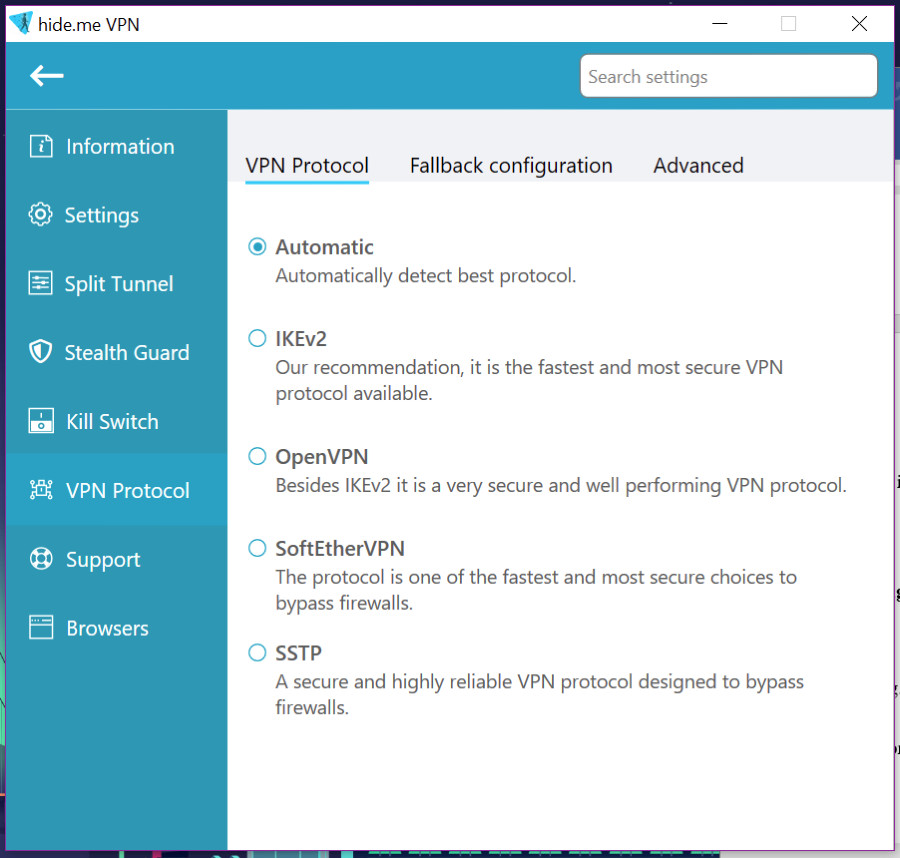
But all in all, the app is pretty simple to use. And, it’s easy to purchase and install.
Is hide.me one of the easiest? No. And in fact, hide.me is surprisingly unintuitive sometimes.
But at the end of the day, it’s not so complicated that a beginner wouldn’t be able to figure it out. And there’s enough complexity for more advanced users to be satisfied too.
A mixed bag, but overall, I’d say hide.me is sounding better so far!
Let’s take a look at something that’s going to make this even more complicated:
Pricing and Features
Now here’s a section you probably won’t skip.
Even if you’re not trying to budget, just about everyone wants to know what they’re paying.
And of course, everyone wants to know what they’re paying for—what are the features that come with the price? Do the features vary plan to plan? What’s a good deal?
Well, it turns out that hide.me keeps this pretty simple.
Check out these plans:
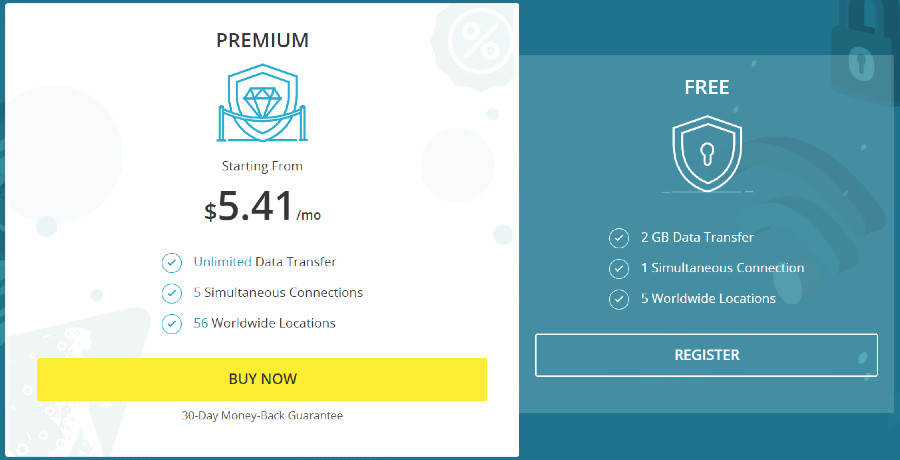
That’s right: there’s a free plan.
The free option is pretty limited—you only get 2GB of data, which can go by pretty quickly.
So yes, the data transfer limit is still a bit low, as is the number of simultaneous connections and locations you have access to.
On the other hand, most other basic features are left intact. Plus, free users even get access to 24/7 support, another unusual perk.
And free VPNs are always limited. This one does have some key limits, but it’s still solid enough in other areas to be considered one of the best free VPNs.
The paid plan is where it heats up though:

Okay, let me put this simply:
Hide.me is EXPENSIVE.
I’m sure plenty of you won’t be bothered by these prices. But to a lot of people, this is a significant departure from the norm.
Let me break down why:
The typical price for a month of service? About $9-$12 a month. $12 is on the high side.
$15? That’s bonkers.
A year? The usual price range would be $4-$6 a month.
Two years? $2-$4 would be most common.
So even if you looked at the pricier side of VPNs, hide.me would still be the highest. It’s easily one of the most expensive VPNs I’ve seen.
Okay, enough about price. Let’s talk about what you get for the price (yes, meaning not the free version):
First thing on everyone’s mind—servers. Here’s what we’re looking at:
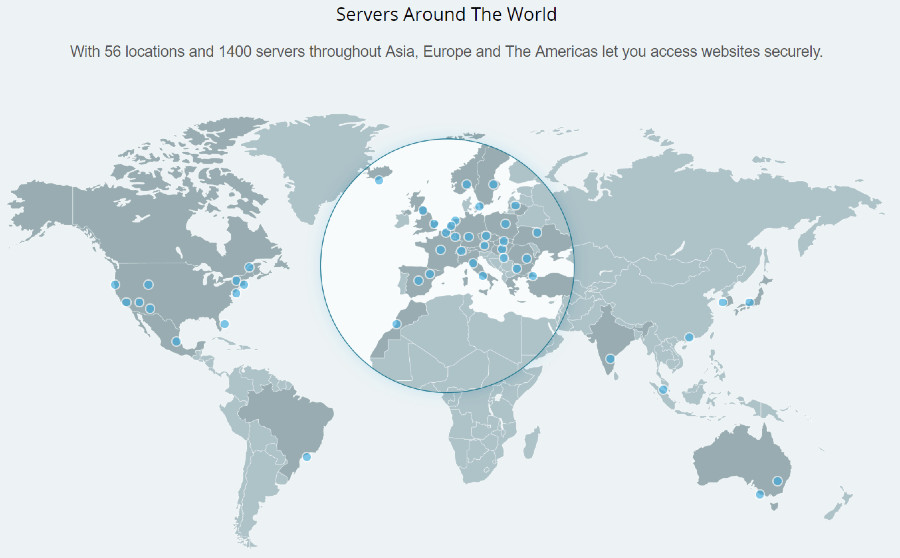
Hide.me counts over 1,400 servers, which is a decent enough number, and 56 locations—again, decent enough.
The locations aren’t on the higher side, which I think is unfortunate—but you can see for yourself whether hide.me has enough of the locations you want.
Plus, Hide.me runs all its servers directly. I’ll explain that in the security and privacy section, but it totally excuses the low location count in my opinion.
But, I can understand that some of you would probably not care about that part much. A lot of you might wonder why these prices would only bring 56 locations.
Fair enough.
So let’s keep looking at the other features hide.me brings.
I usually glaze over protocols, because most VPNs offer the same 2 or 3. But hide.me actually offers:
Four protocols! OpenVPN, SoftEther, IKEv2, and SSTP.
I actually find this a little disappointing—hide.me used to offer SEVEN protocols, but now it’s just four.
Hide.me, other than that, has mostly basic features. But the basic features come with a lot of flexibility:
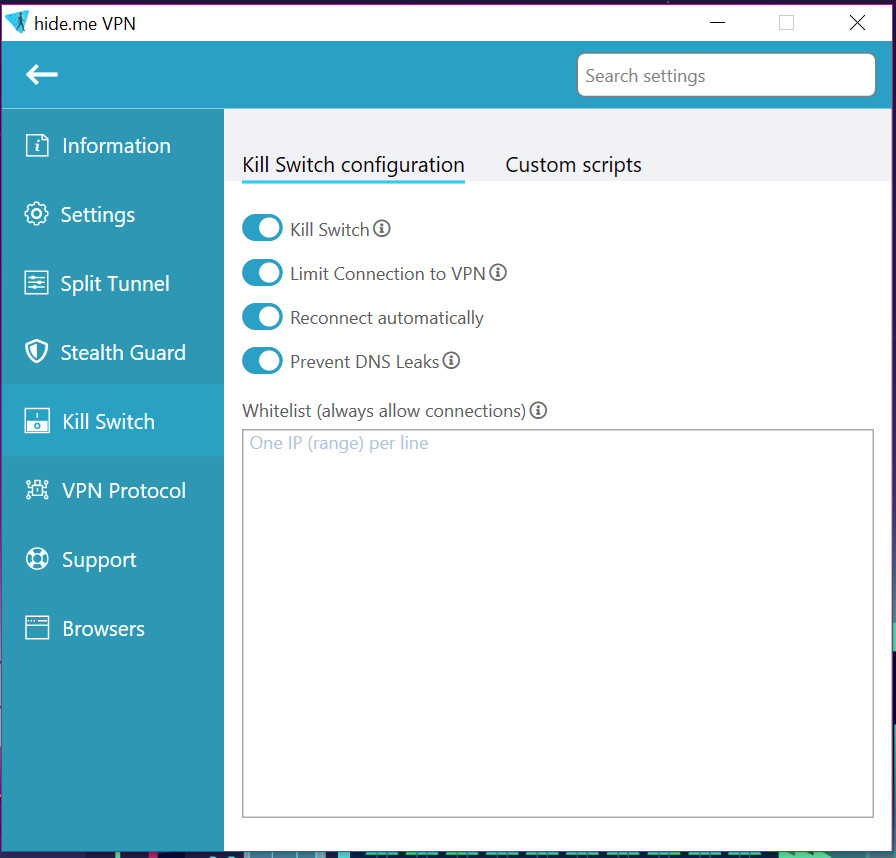
Take this kill switch, for example. It’s a super common feature, almost universal, but most VPNs have a pretty rendering of it.
But hide.me’s version, as you can see, has a lot of options and settings. That’s pretty useful.
The same goes for this:
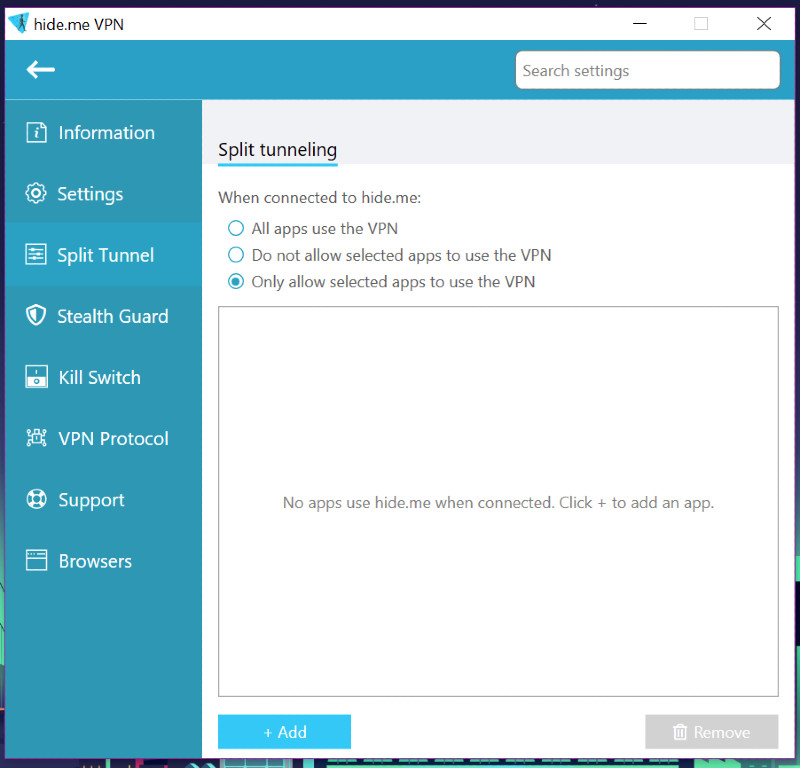
The split tunnel feature basically lets you choose which apps you want to run through the VPN. You can have the VPN apply to everything on your device, or only select things—like a certain browser.
That’s mostly it for major features—except for this:
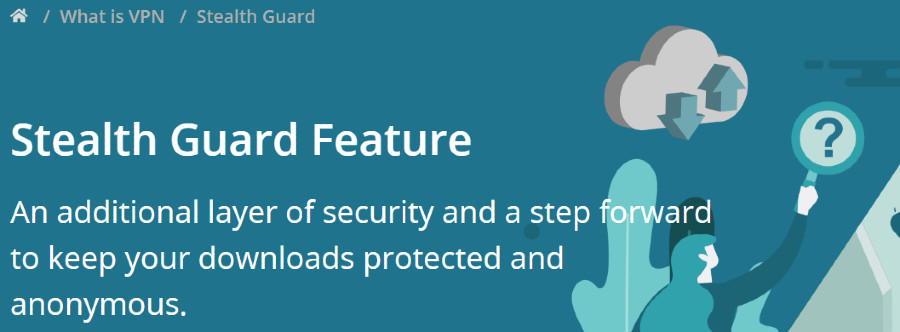
Stealth guard is interesting. At first glance, it sounds a bit redundant, if you already have split tunneling.
But it’s not—in fact, it’s kind of the opposite of split tunneling. Stealth guard basically lets you choose which apps you want to LIMIT to the VPN connection.
Meaning, instead of choosing which apps to exclude, you choose which apps will be exclusively operating in an encrypted connection.
This is super useful—you won’t have to worry about turning on the VPN before using this or that app, and you can use it for all sorts of things.
BitTorrent applications are a particularly good candidate, for example.
It’s also good to note that these features—Stealth Guard and Split Tunneling—are GREAT for saving money when it comes to mobile data.
Those are the major features. But there are a couple minor ones, too.
One is this:
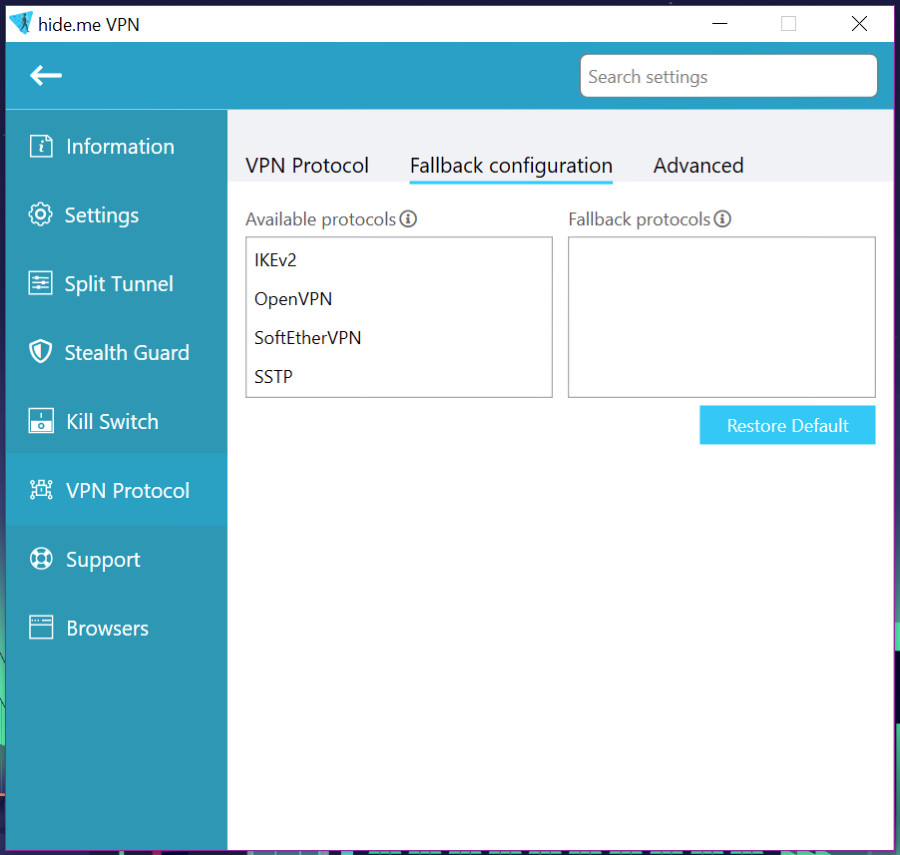
Fallback configuration basically lets you customize what protocols you want to use as a backup, in case your currently selected protocol fails.
It’s a minor setting, but more advanced users will appreciate the option, especially as few VPNs give it.
There’s also this:
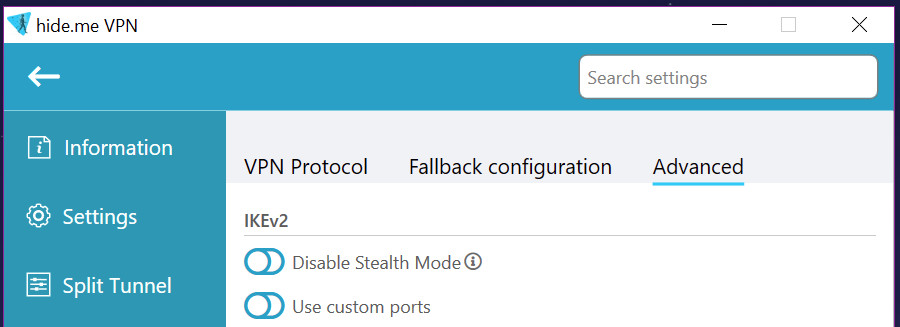
The IKEv2 protocol comes equipped with a stealth mode—basically, a setting that hides the fact you’re using a VPN.
This is ESSENTIAL if you’re in an environment that restricts VPN use. And that doesn’t just mean x or y oppressive regime, it means your school or workplace, too.
Or even just your regular ISP.
Either way, stealth mode is one of the BEST features any VPN can include, and I’m pretty impressed hide.me snuck it in there.
So, overall, what’s the take?
Well, hide.me isn’t the MOST well-featured VPN I’ve seen. But to be fair, it is on the better side.
The thing is that hide.me doesn’t have a huge number of features, but it does have pretty good settings and flexibility on the features that it does offer.
Plus, the most important features are there…overall, it’s pretty solid!
The downsides?
Well, those prices are still pretty high, and the available locations aren’t on the higher side.
But, nothing’s perfect. Let’s continue:
Customer Support
I often remark that customer support is overlooked. Well, I stand by it.
Is solid customer support my NUMBER ONE priority in VPN hunting?
No.
But it’s still pretty important to bear in mind, even if you’re the most advanced user out there—customer support helps you make the most of the software you paid for (or didn’t) and can help you get around ISP or content-provider blocks.
So let’s get to it!
Hide.me actually has a place in the application itself for contacting customer support:
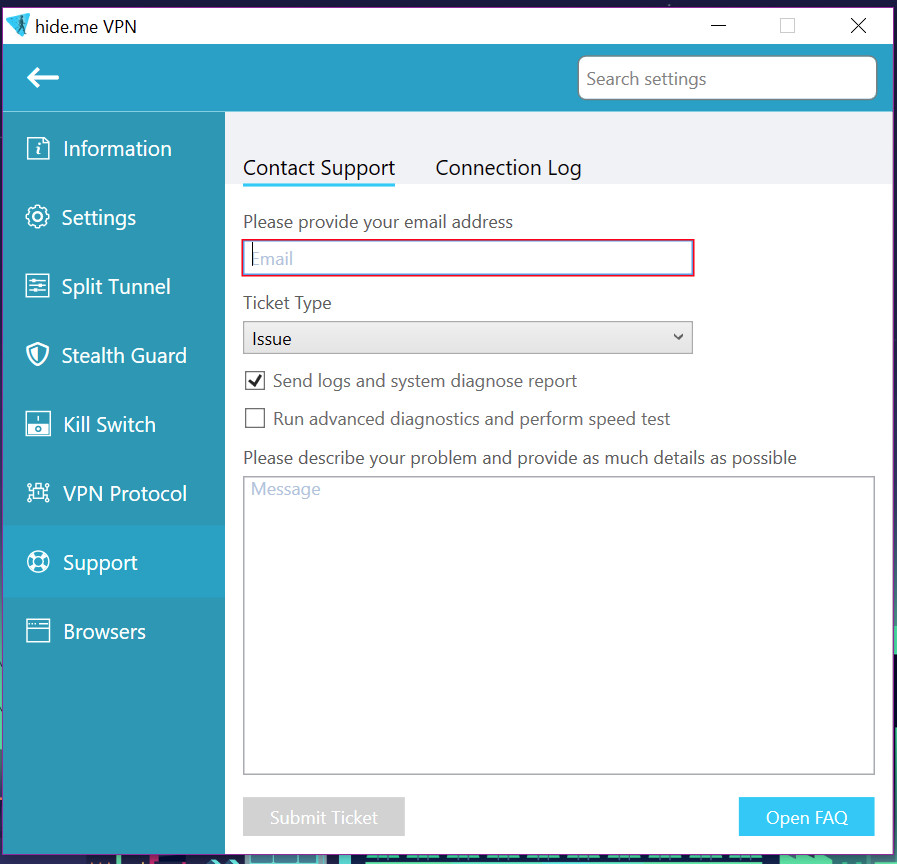
Essentially, you can send a ticket within the app itself, without ever having to use the website or your browser.
So that’s pretty neat.
You can also go to the website to talk to representatives via live chat. Here’s an example:
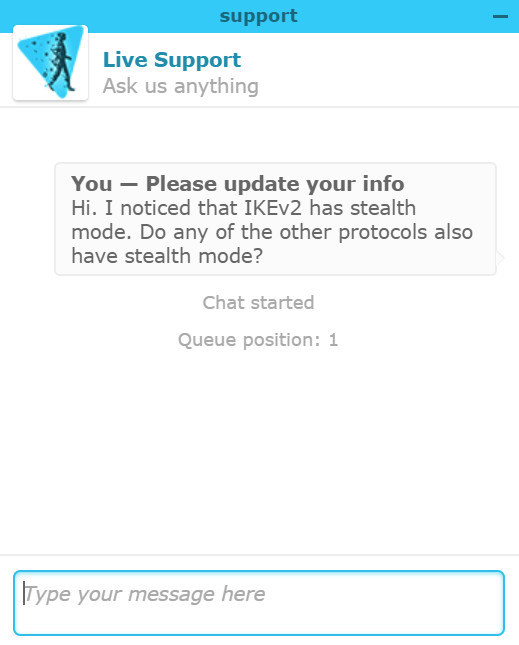
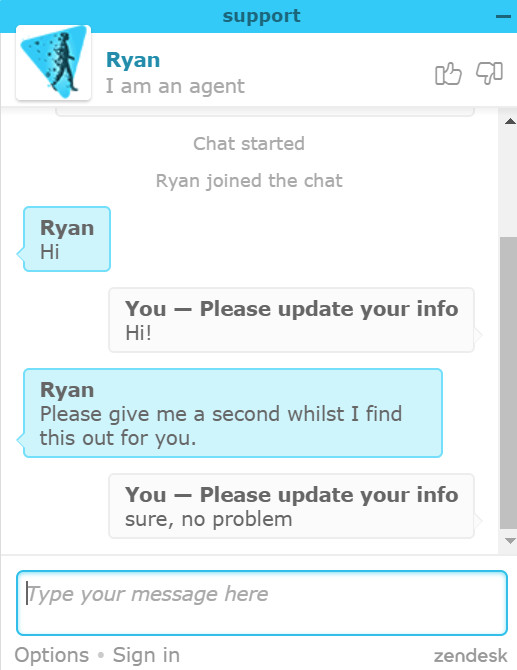
The rep took a little bit to reply, which is fine. In the scheme of things, a minute or two isn’t a big deal.
But after a few minutes:
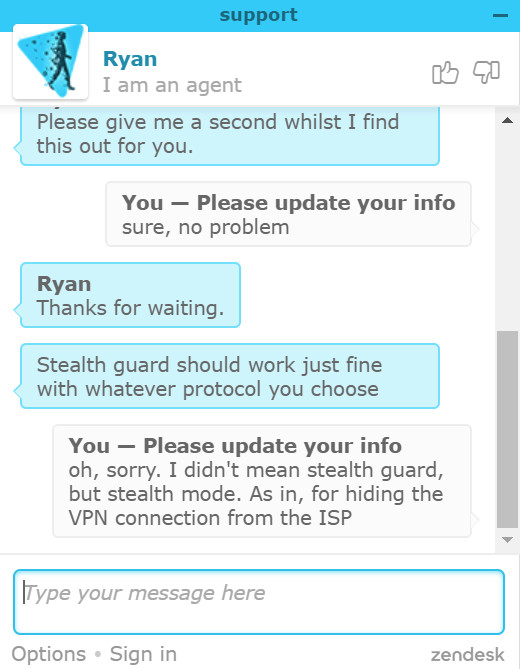
Look, I don’t blame the guy. Stealth Guard sounds like what any other VPN would call their stealth mode. He probably thought I misunderstood. No biggie.
Sure enough:
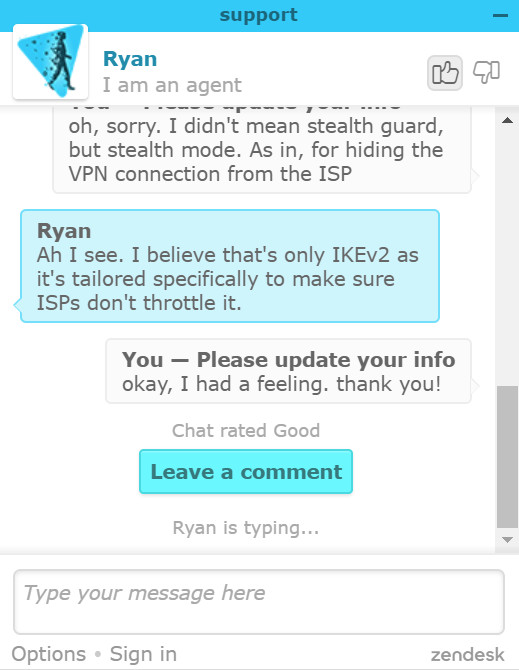
While I don’t want to be too harsh on the representative for what is, in my opinion, a reasonable misunderstanding…
It still took me about 6 minutes to get an answer, between the misunderstanding and waiting for him to reply.
It’s not too big a deal, but a lot of my live chats with hide.me have taken longer than most other live chats.
But hey, it wasn’t 10 or 15 minutes, right? Overall, the live chat is fine, just not the best.
Contacting support through the ticket system is usually more reliable in terms of the quality of responses, anyway. But that’s hardly surprising.
But, I have to note that support via tickets is not the best I’ve experienced. Remember when I talked about those connection issues in the beginning?
Well, I talked back and forth with customer support via email for like, two days. Instructions were not well-written or clear, and I couldn’t tell if the reps fully understood my problem.
But, in fairness to hide.me, customer support ultimately did its job through the ticket system.
Now, aside from contacting reps through live chat or ticket, you can also look at on-site information.
Primarily, this means the support center:
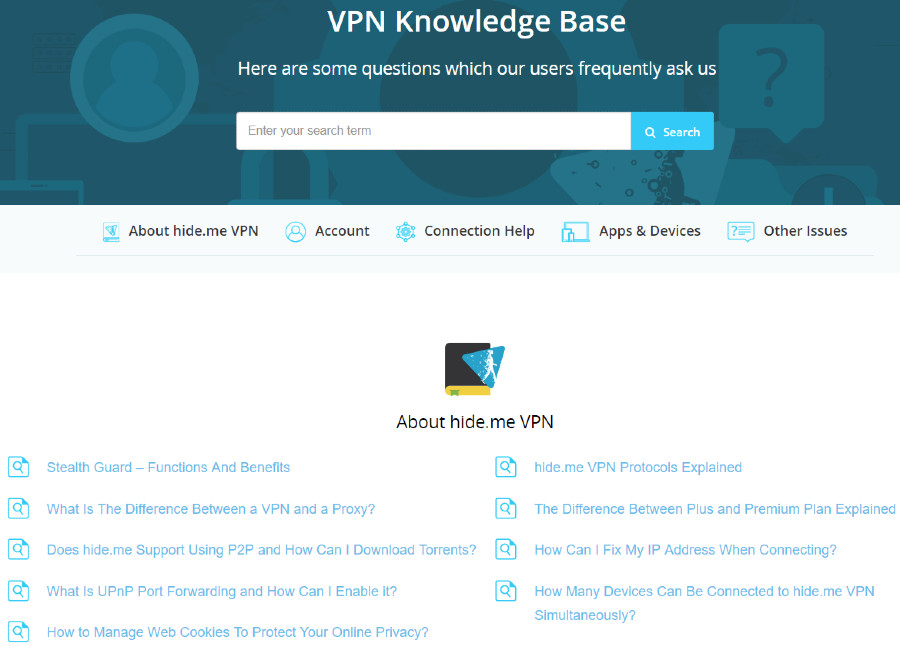
I was actually pretty impressed when I first saw the knowledge base.
There are quite a few categories that each have pretty decent sets of articles:
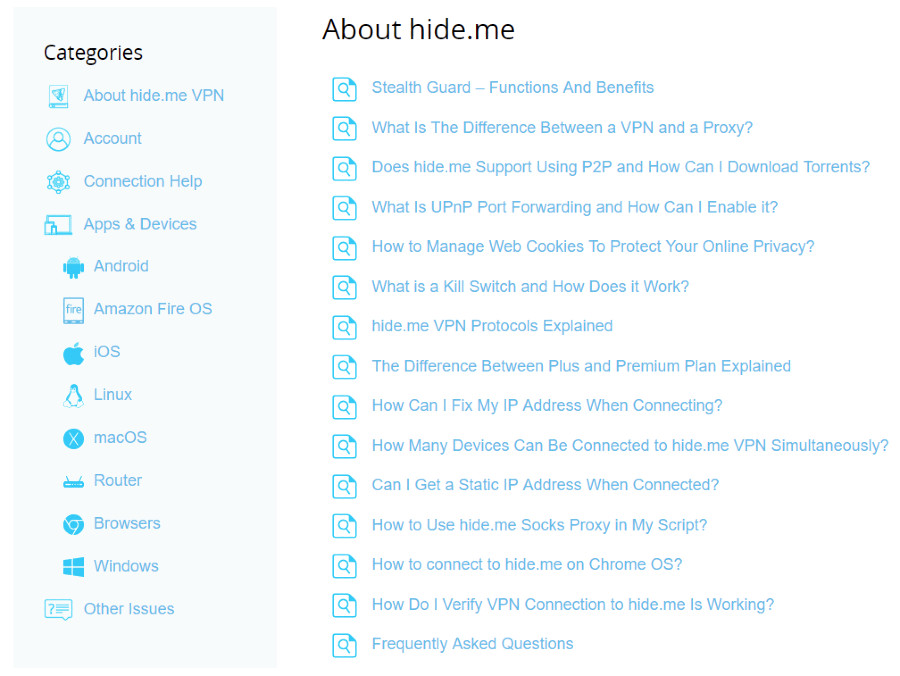
And although there are only official hide.me apps for the most common operating systems and browsers, there are setup guides for quite a few other platforms.
And the articles themselves are surprisingly detailed and easy to read.
The only problem?
Some of the articles are out of date. In fact, much of the website is out of date—hide.me recently changed its pricing structure, and it hasn’t updated a lot of the site to reflect the changes.
So the kind of outdated articles are something to look out for. But aside from that, it’s a really solid knowledge base!
But believe it or not, that’s not even it.
There’s also this:
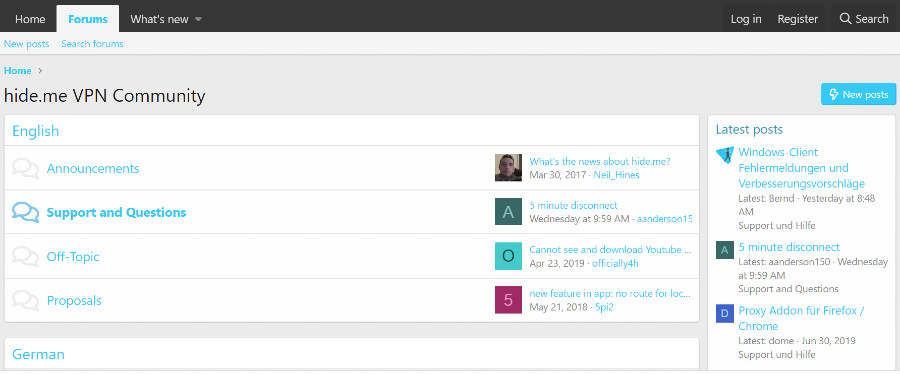
A community forum page. I really like when internet and software companies have forum pages.
Now, is it the biggest or most robust forum out there?
No, of course not.
BUT, there are still a LOT of articles that cover the latest problems, glitches, and tips.
So all in all, I’ve got to say hide.me’s customer support is pretty solid. Not perfect, of course—the live chats tend to drag out and some of the onsite info is out of date.
But nonetheless, live chat and tickets are both reliable methods of contacting reps, the knowledge base is relatively solid, and the community forum is also useful!
Looks like hide.me is determined to prove itself. Well, it’s got one last challenge:
Security and Privacy
Remember when I said that I didn’t know much about hide.me until I really looked into it?
Well, because of that I was really skeptical about its security and privacy.
You have to understand that a LOT of VPNs are actually not as great with security and privacy as they should be.
Not every VPN has been caught violating their privacy policies, but a few big names have, which makes me hesitant about the rest.
So why would I trust hide.me, a VPN I barely heard about and that also offers a free VPN plan? (Free VPNs are notorious for being sub-par on privacy).
So when hide.me said this:

I wasn’t impressed. Because all VPNs say that—of course hide.me is going to say that, too.
And then hide.me repeated itself on its site:

Which actually made me a little more suspicious.
But then I saw this:

And this is where I started taking hide.me seriously.
Sure, the English is off a bit, and hide.me is definitely NOT the only VPN to be independently certified (I guess hide.me means, the only VPN to be certified by Leon Juranic, which is kind of meaningless).
But, the point stands:
Hide.me has been audited by third parties, which automatically makes it more trustworthy than MOST VPNs.
But that’s not even the whole story. Hide.me’s location also works in its favor:

Is Malaysia better than the US or UK, for a VPN to be HQ’d in? Absolutely.
So far, these two points—the Malaysian location and the verified logging policy—REALLY make hide.me VPN one of the better VPNs on privacy and security.
The question now, is how much better can hide.me get?
This helps:
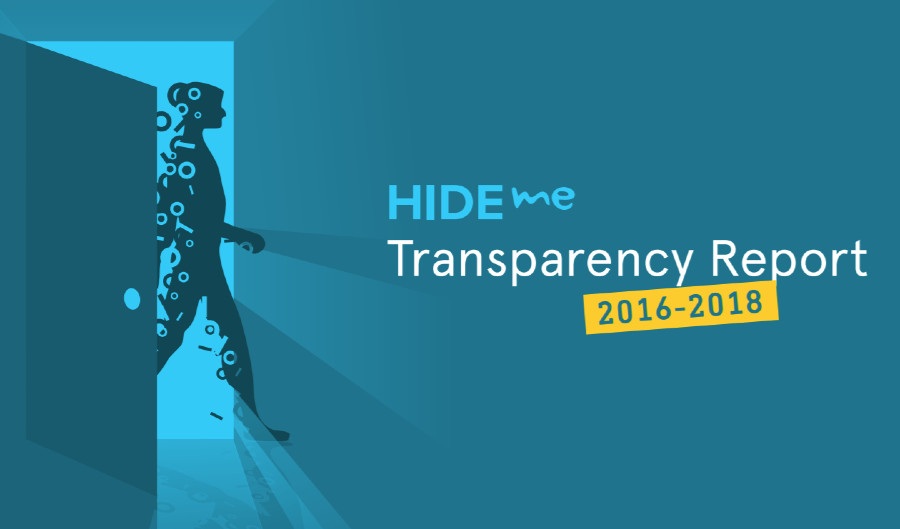
Only a few VPNs put out a transparency report, so this is great news.
And what’s IN the transparency report is even better:
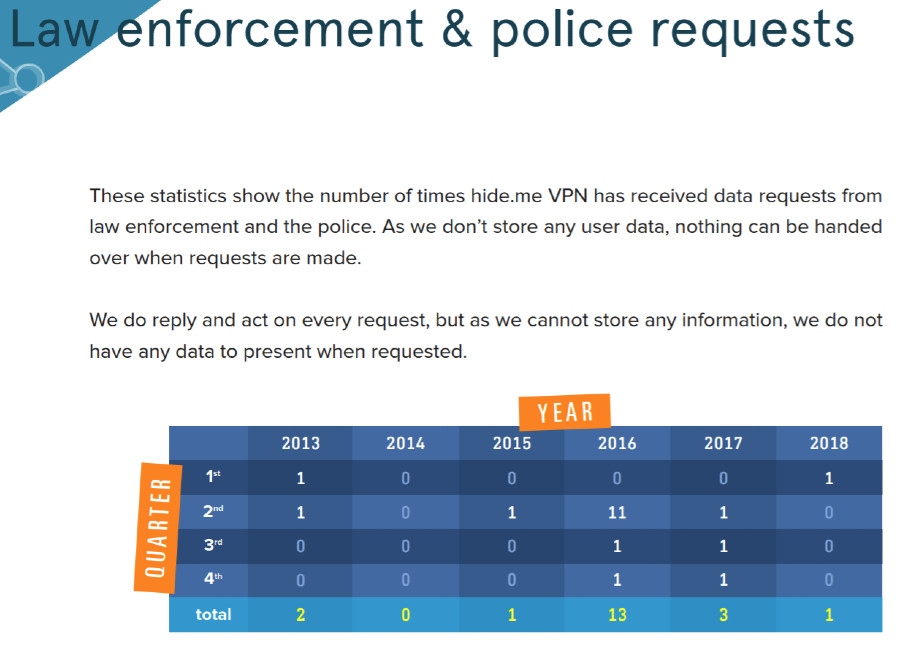
Hide.me actually has gotten quite a few requests from law enforcement agencies—especially in 2016, jeez!
Apparently, hide.me cooperates with every request, technically—but they never genuinely cooperate because they have no data to present.
At this point we must simply take hide.me’s word, the same way you have to with other VPNs who put out similar transparency reports.
But I’m more inclined to trust hide.me because of its audit—so far, then, hide.me is really strong here.
In fact, there’s only one other thing I want to hear. And it turns out, hide.me does it.
That thing?

Hide.me’s server network is SELF-RUN.
This means that hide.me is one of the FEW VPNs to not use third parties to run its server network.
Seriously, most VPNs use outside help in running servers, even if the VPN runs some servers directly. This reduces transparency and increases the risk of security violations.
So this seriously lends credibility to hide.me.
When we also take into account the security features I mentioned earlier, I think hide.me actually shapes up to become one of the MOST trustworthy VPNs for security and privacy.
Having an independent audit, being located in Malaysia (without data retention laws), running the server network directly, and releasing a transparency report—hide.me really stands out.
Alright, great! We’re almost there. Let’s tally the major points for and against hide.me:
Pros
- Overall, reliable performance. Can torrent and stream just fine.
- There’s a free plan! The free plan is one of the stronger free VPNs around.
- Overall, on the better side in terms of features and settings. Pretty flexible/customizable.
- Solid onsite information and resources.
- Great on privacy: hide.me has been audited by a 3rd party, is located in Malaysia (which does not have data retention laws) and directly runs ALL its servers.
Cons
- Not the best speeds.
- Due to a mistake I made in the split tunnel feature, I accidentally removed the VPN’s ability to connect. However, the VPN software SAID it connected when it wasn’t, a very dangerous glitch.
- The app can sometimes be clunky, and closes itself often (even if you try to fix that in options).
- One of the most expensive VPNs I’ve seen. Whether the commitment is monthly, yearly, or for two years, hide.me will be charging you significantly more than the vast majority of VPNs.
- Limited number of apps available for download—only mainstream devices will be covered.
- Customer support is so-so via tickets and live chat.
Conclusion: Do I Recommend hide.me?
Okay, I think it’s time I wrap up hide.me’s story for you.
Let’s cut to the chase: do I recommend hide.me?
Hm…kind of.
See, at the end of the day, hide.me doesn’t really do that much wrong. It’s got quite a few flaws, but none of them are really fundamental to the service.
And, it does a few things well:
It’s got a decent set of features, the service and software is pretty customizable, and the performance is overall okay.
In particular, security and privacy is strong with hide.me. In fact, it’s one of the strongest VPNs on security and privacy, for managing its own server network, being located in Malaysia, and being audited.
But here’s the other thing:
Price.
Hide.me is significantly more expensive than most VPNs. Only the two-year commitment has a more reasonable price, in my opinion.
The question is—do you get enough to warrant the higher price?
And to be honest, I’m not sure. See, there are VPNs that have better performance, for lower prices. There are VPNs with better looking software and better customer support, for lower prices.
There are VPNs with more features for lower prices, and, believe it or not…there are even VPNs with STRONGER privacy and security but for lower prices.
In the end, I don’t think you get anything with hide.me that you can’t get with another VPN for a lower price.
Wait, why do I recommend hide.me at all?!
Because some of you might really like it. It might hit all the sweet spots for you, and you might not find it too pricey.
So you should give hide.me a try! There’s a free version OR you can try the premium version risk-free for 30 days.
Who knows—it just might be a hidden gem worth investing in.
Write your own review
Was I way too harsh on hide.me VPN? Or maybe you love hide.me, and wanted to see this or that talked about more.
Whatever you think, I’d LOVE to hear from you if you’ve used hide.me! You can leave a review below.



